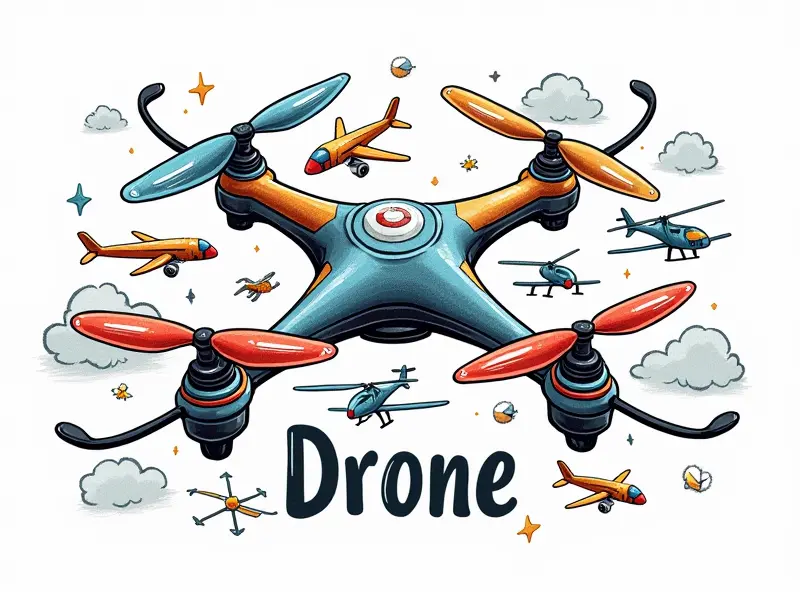Is 5.8GHz the standard for FPV?

Why 5.8GHz Dominates FPV Racing
The world of first-person view (FPV) racing has seen significant advancements in recent years, and one technology that stands out is the use of 5.8GHz frequencies for video transmission. This frequency band offers unparalleled performance benefits over other options, making it a dominant choice among enthusiasts and professionals alike.
Is 5.8GHz Essential for FPV?
The question often arises: Is 5.8GHz essential for FPV? While there are alternative frequencies available, the advantages of 5.8GHz make it an indispensable component in high-performance FPV setups. This frequency band provides superior range and clarity, crucial factors for competitive racing.
Advantages of 5.8GHz for FPV
- High Bandwidth: 5.8GHz offers a higher bandwidth compared to lower frequencies, allowing for smoother video transmission with minimal lag.
- Lower Interference: This frequency band experiences less interference from other devices, ensuring clearer and more stable signal quality.
- Fine Resolution: 5.8GHz supports high-resolution video feeds, enhancing the pilot's ability to navigate through tight spaces and make split-second decisions.
5.8GHz: The Gold Standard for FPV
The term "gold standard" is often used in contexts where a particular technology or method sets an industry benchmark. In the realm of FPV racing, 5.8GHz has become synonymous with excellence and reliability. Its ability to deliver high-quality video signals over long distances makes it the preferred choice for serious pilots.
Why RC Pilots Love 5.8GHz FPV
Radio-controlled (RC) pilots appreciate the versatility and performance of 5.8GHz systems. The frequency's robustness in handling various environmental conditions, coupled with its superior video quality, ensures that pilots can enjoy seamless flight experiences regardless of the setting.
Exploring the Dominance of 5.8GHz in FPV
The dominance of 5.8GHz in FPV racing is not accidental but a result of its inherent advantages over other frequencies. From improved signal clarity to enhanced range, these factors contribute to why this frequency band has become the go-to choice for competitive and recreational pilots.
Signal Clarity
The clarity of video transmission at 5.8GHz is unmatched by lower frequencies. This ensures that pilots can see every detail in real-time, crucial for navigating through complex courses or performing acrobatic maneuvers.
Enhanced Range
Ranging capabilities are another area where 5.8GHz excels. Its ability to maintain a strong signal over longer distances provides pilots with greater flexibility and control during flights.
Benefits of Using 5.8GHz for FPV Systems
- Superior Range: Pilots can fly farther without losing video quality, expanding their operational range.
- Reduced Lag: Lower latency ensures that pilots receive real-time feedback from the drone's camera feed.
- High-Quality Video: 5.8GHz supports high-definition video streams, offering a more immersive flight experience.
Is 5.8GHz Setting the FPV Standard?
The widespread adoption of 5.8GHz in FPV systems has set a new standard for performance and reliability. As technology continues to evolve, it is likely that this frequency band will remain at the forefront of FPV advancements.
5.8GHz: Essential for Top FPV Performance
To achieve top-tier performance in FPV racing, using 5.8GHz frequencies is not just beneficial but essential. The combination of superior range, signal clarity, and high-definition video transmission makes it indispensable for any serious pilot.
Why 5.8GHz Leads in FPV Systems
The leadership of 5.8GHz in FPV systems can be attributed to its unique properties that cater specifically to the demands of this niche market. From handling high-speed data transmission to providing clear, uninterrupted video feeds, it meets and exceeds expectations.
The Rise of 5.8GHz in FPV Tech
The rise of 5.8GHz in FPV technology is a testament to its reliability and effectiveness. As more pilots adopt this frequency band, the overall quality and competitiveness of FPV racing continue to improve.
Conclusion
In conclusion, while there are alternative frequencies available for FPV systems, the dominance of 5.8GHz in the industry is undeniable. Its superior range, signal clarity, and high-quality video transmission make it an essential component for any serious pilot looking to achieve top-tier performance. As technology continues to advance, the role of 5.8GHz in setting new standards for FPV racing will only grow stronger.

